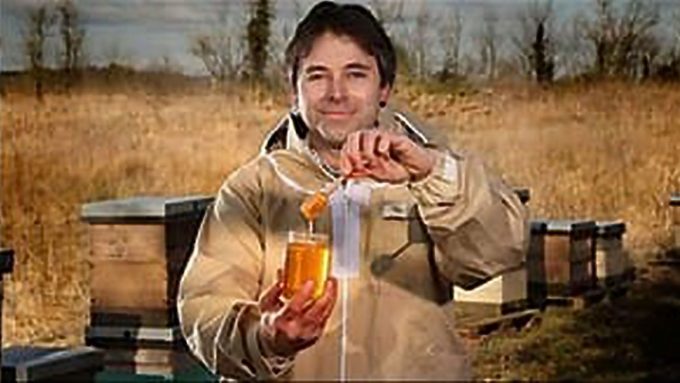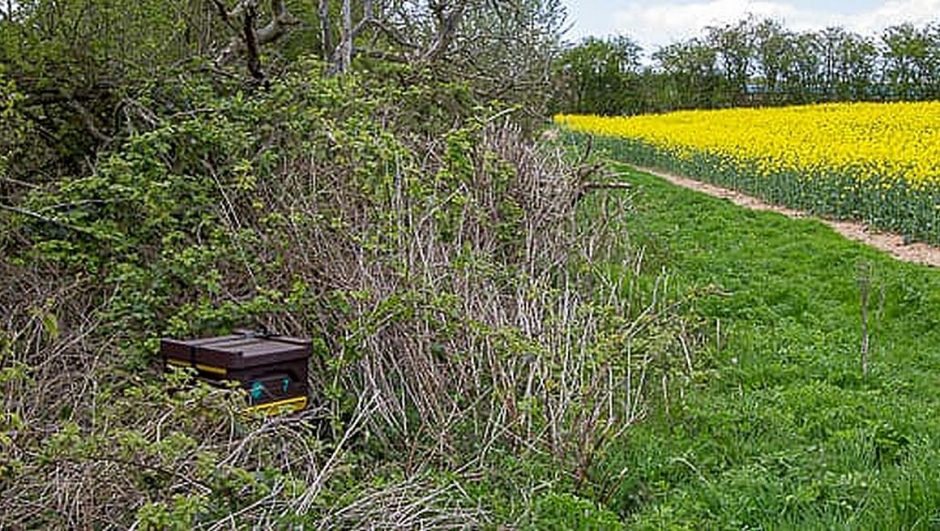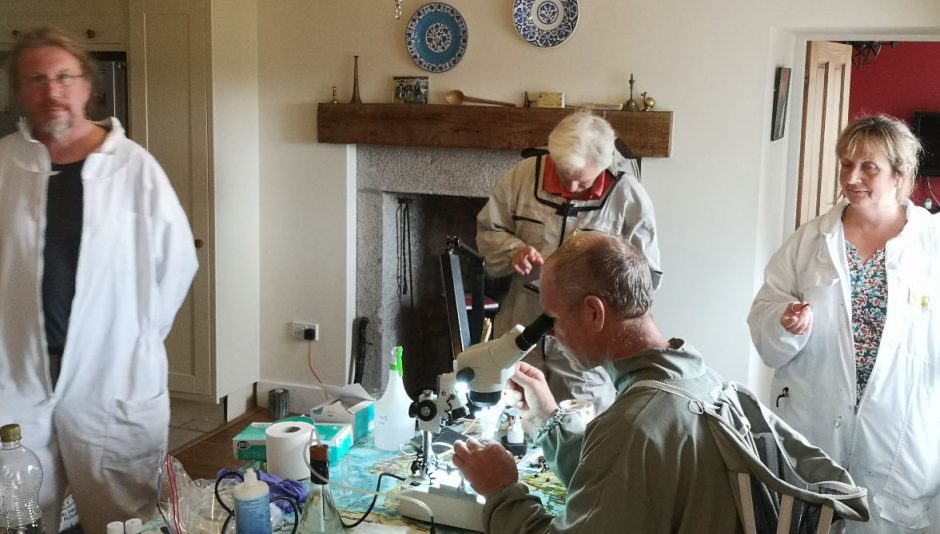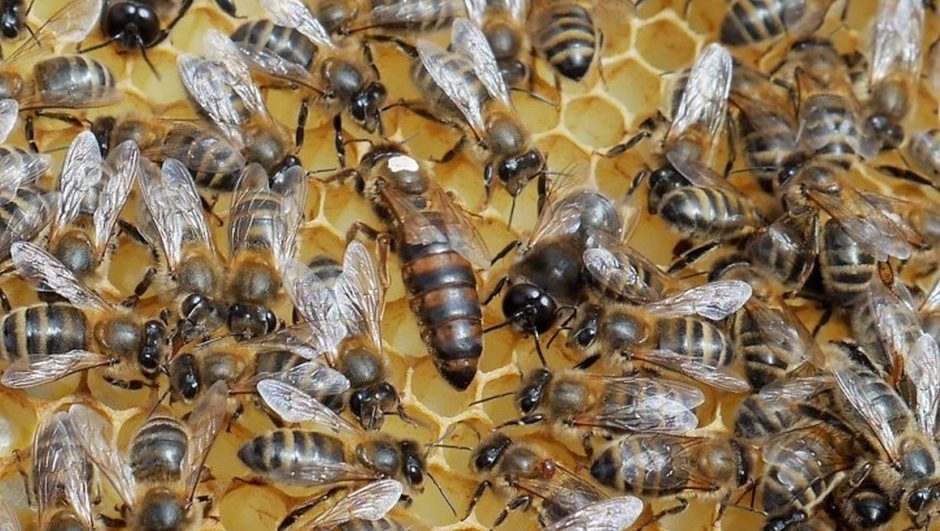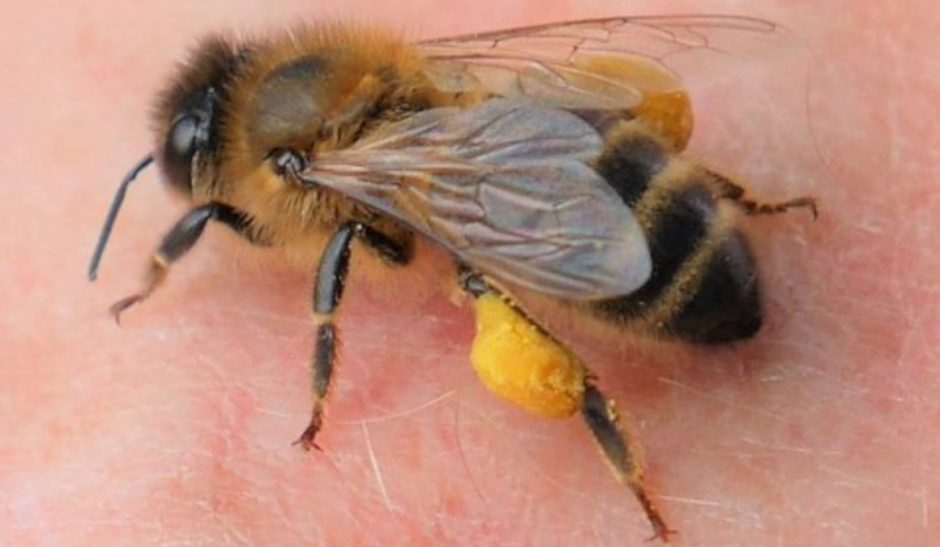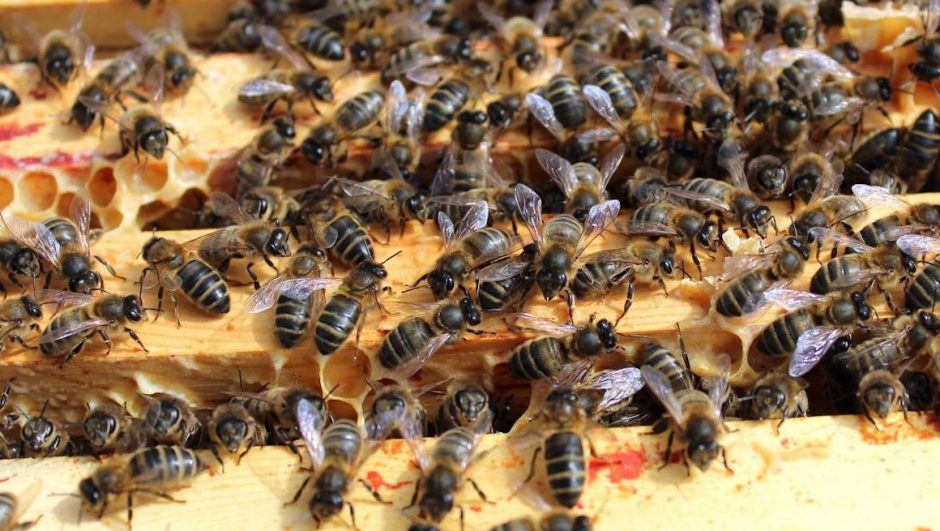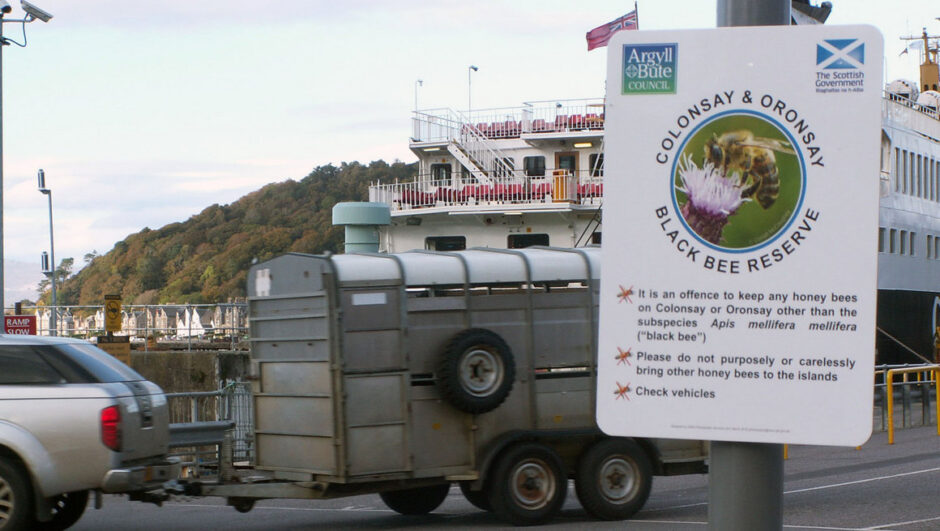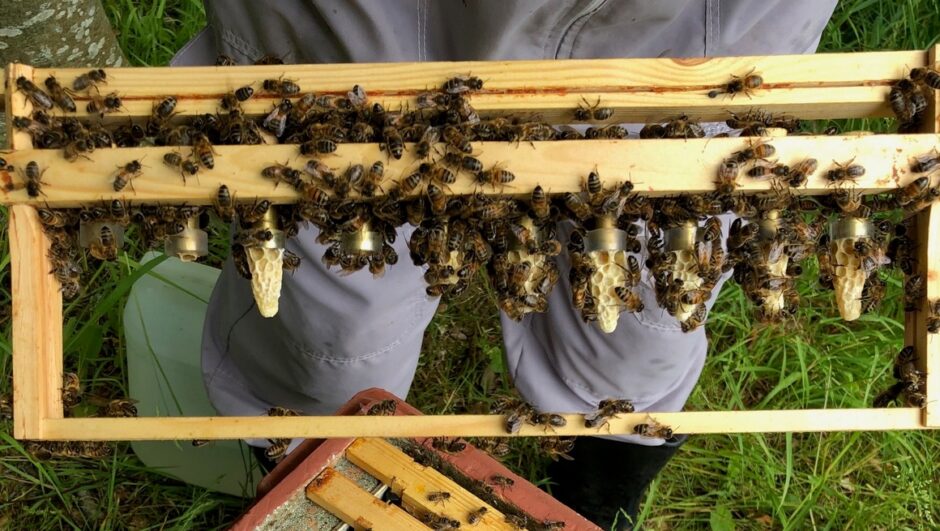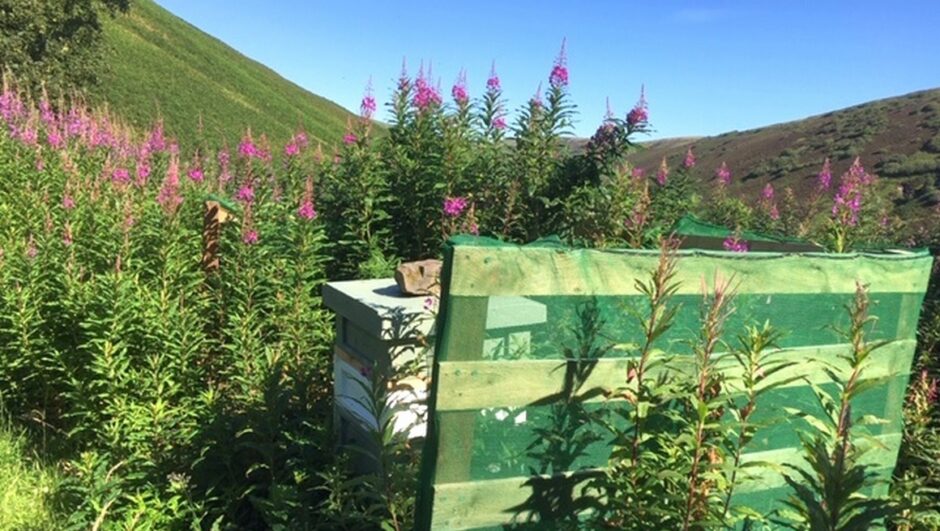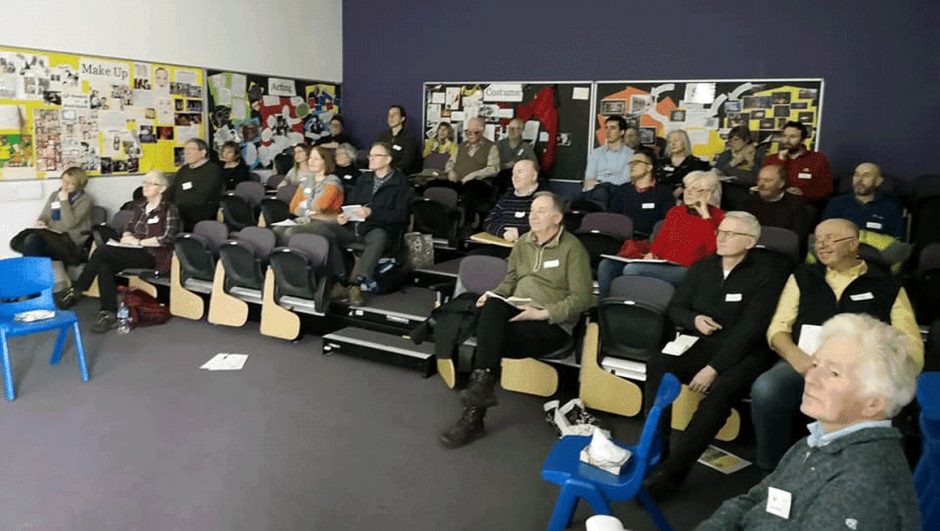Our activities have shifted from winter discussions to work with our own bees, perhaps queen rearing if the weather improves, and to our informal monthly members’ meetings online. Looking back at our winter season, we… More
David Evans – Bait Hives
Our next SNHBS Zoom meeting is on Monday evening, 28 November, at 19:30, when David Evans will talk to us about bait hives.
This is a members-only event. If you’re not a member and wish to join SNHBS, see the Membership Page here. New memberships will now run until the end of 2023.
[Photo: David Evans]
First Winter Meeting
Topic: SNHBS Winter Meeting – Instrumental Insemination and Scottish Native Honey Bees
Time: Oct 31, 2022 07:30 PM London
Join us for our first meeting of the winter on Monday 31st October at 7:30 when Sarah Leahy, John Durkacz and Gavin Ramsay will lead a discussion on Instrumental Insemination. We will share why and how we set about trying the method this summer, with the valued assistance of Angus Nicol from Shetland, and all the difficulties and issues getting everything into place. We will also discuss where we think the technique may fit in for the future work of SNHBS.
[Members only. See October Newsletter for Zoom link.]
Scottish Native Honey Bee
Scotland’s native honey bee, Apis mellifera mellifera, is at serious risk of disappearing by being genetically swamped by cross-breeding with the non-native types now found across the country, rather like our native wildcat. Over many millennia, this honey bee adapted to our changeable and often windy climate on the Western fringes of Europe. These bees are often said to be stocky, dark, frugal and with particularly hairy backsides! All these traits can be useful to an insect needing to forage, survive and even mate in our cool, windy climate.
Continue reading “Scottish Native Honey Bee”SICAMM 2021: the online conference that’s got everyone buzzing
With over 200 delegates, the first SICAMM online conference about dark European honey bees has been a huge success.
SICAMM has held conferences every two years “to support the survey, conservation, management and breeding of all extant ecotypes and geographical variants of the dark European honey bee Apis mellifera mellifera.” Due to the Covid-19 pandemic, SICAMM was unable to hold the planned 2020 meeting in Ireland and, so the SICAMM committee organised and held its first online conference beginning on 23rd October, 2021. It has been followed with a weekly lecture series held every Wednesday evening at 6pm GMT. These sessions run until 22 March 2022.
Continue reading “SICAMM 2021: the online conference that’s got everyone buzzing”2021 Survey for Scottish Native Honey Bees
Open to all beekeepers in Scotland
We hope 2021 will see a gradual easing of restrictions as the Covid pandemic comes under control. We have planned an extended search for native honey bees this year which involves an easy to use initial photo screening and further assessment by a team of experienced Conservation Project assessors.
Our aim is to find good strains of native and near-native honey bees that are endemic to Scotland.
Continue reading “2021 Survey for Scottish Native Honey Bees”Threatened imports of non-native honey bees into Ireland ….
Recent reports in the media of threatened imports into Ireland of non-native honey bees has Irish beekeepers up in arms. The Scottish Native Honey Bee Society share the concerns of beekeepers in Ireland who have worked tirelessly and devoted a lifetime of beekeeping in bringing the native honey bee to the unique position it now occupies. To find out more please follow this link to the Native Irish Honey Bee Society ……. http://nihbs.org/
Conserving Black Bees
(Apis mellifera mellifera) in the Hebrides, Scotland
By Andrew Abrahams
We are grateful to the author Andrew Abrahams and the editor of the American Bee Journal for permission to use this article.
Readers might ask, why on earth spend much of a lifetime conserving what most beekeepers perceive as an aggressive, unproductive race of honey bee — a race perhaps left behind by history? I was fortunate, often by chance rather than grand design, to gather up some pure remnants of Scotland’s native honey bee (Apis mellifera mellifera) in the late 1970s and since then I have managed over decades to improve this population in the isolation of the remote island of Colonsay, which lies 16 miles off the west coast of Scotland (see https://colonsay.org.uk).
Continue reading “Conserving Black Bees”Queen rearing: five stages to manage
Queen rearing can be a hugely rewarding aspect of beekeeping when successful and the most exasperating when it does not go to plan. I recommend you embark on it willing to learn incrementally from your experience and not be deterred by disappointments. Success generally follows careful application and practice of sound guidance.
There are five basic stages to plan and manage, from the laying of eggs to successfully mated queens laying eggs in their own colonies. I will explain each of these, briefly, highlighting key aspects. These stages involve the raising of queen cells from fertilised worker eggs rather than using swarm, supersedure or emergency cells already drawn by bees.
Continue reading “Queen rearing: five stages to manage”The Moorfoot Group
The Moorfoot Group currently comprises six beekeepers setting up an isolation Amm mating apiary in the Moorfoot area. We aim to develop approximately 20 Amm colonies to overwinter in the the Edinburgh, West Linton, Gordon, Penicuik and Kirknewton areas. At present we have approximately sixteen queenright Amm and hybrid/ Amm colonies, mostly grafted by us from Amm frames kindly donated by Kate Atchley and John Durkacz with additionally five grafted Amm queen cells which are awaiting local mating. The locally mated hybrid/ Amm colonies are to supply Amm drones and will be transferred to Moorfoot next April before local non Amm stowaway drones can hitch a ride.
The philosophy of the group was to site the apiary where no sensible beekeepes would want a colony.
However we have found that if the transferred colonies can manage the harsh springs there is ample forage for a good honey crop that will help the site to be self sustainable.
We’re grateful to have recieved a £400 grant from SAMMBA and thank John and Kate for their generous assistance.
Jim Lindsay
SNHBS 4th Annual Meeting
Loch Leven Community Campus, Muir, Kinross – 14 March 2020
By Justine Swinney
Thanks to everyone who attended our Annual meeting on 14 March at the Loch Leven Community Campus in Muir, Kinross. Considering the uncertain situation we were in just nine days before the full Covid-19 lockdown, we had an impressive turnout; and thank you to everyone for following the guidance at that time in terms of vigilant handwashing etc.
Jo Widdicombe, President of BIBBA (Bee Improvement and Bee Breeders Association) valiantly journeyed up from Cornwall and gave us two inspiring talks on bee improvement (read more about Jo’s presentation here).
Continue reading “SNHBS 4th Annual Meeting”


